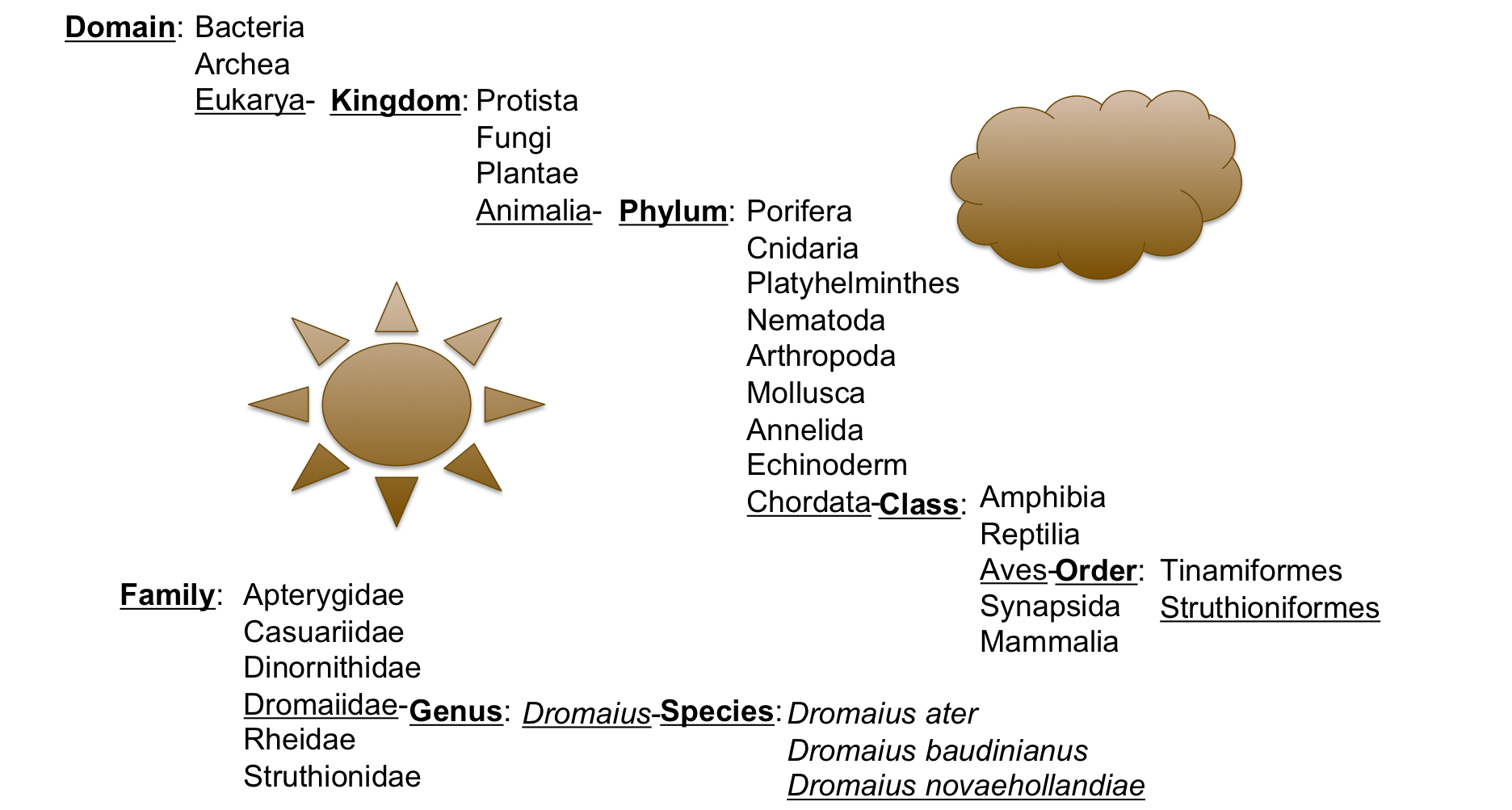Dromaius novaehollandiae
Classification
The emu belongs to a group of flightless birds known as ratites. This group includes the Emu, Cassowary, Rhea, Ostrich, Moa, and Kiwi.
The emu got its name because the males sometimes can make a call that sounds like "e-moo".
Domain: Eukarya
Emus are multicellular, have membrane bound organelles, undergo mitosis for cell division, and sexually reproduce.
Kingdom: Animalia
Emus have complex Eukaryotic cells, multicellular, aerobic, sexually reproduce, and are mobile.
Phylum: Chordata
Emus possess dorsal nerve cord, notocord, and pharyngeal gill pouches. They are vertebrates.
Class: Aves
Emus have four body divisions: the head, neck, trunk, and tail. They have paired limbs, covering of feathers, and leg scales. their skeleton has air cavities. They fertilize internal laying eggs.
Order: Struthioniformes
Emus are giant birds, have a small head and a medium, flat bill. Their wings are smaller and have no keel on their sternum, which makes them flightless. They have strong legs. The males are responsible for incubation.
Family: Dromaiidae
Emus have legs that were adapted for running. They are large flightless birds that live in Australia.
Genus: Dromaius
Emus live in Australia. They have three toes. Both male and female emus are the same color. Males incubate the eggs.
Species: Dromaius novaehollandiae
Emus are large, Australian, flightless birds. They are 5-6 feet tall, thick and clumsy looking, and their feathers look like hair. Their wings are so small that the wings are almost invisible. Dromaius is a Greek word meaning racer. The word novaehollandiae is Latin referring to New Guinea. Dromaius novaehollandiae roughly means "a fast runner form New Guinea".
This is a taxonomic breakdown of Dromaius novaehollandiae from its Domain to Species.

This phylogenetic tree is based on morphology. This shows where the Emus fit in the group of ratites. It is closely related to the Cassowary based on morphological comparisons.

Continue to Habitat.
Back to Homepage.